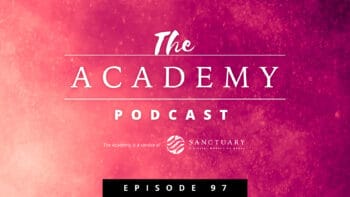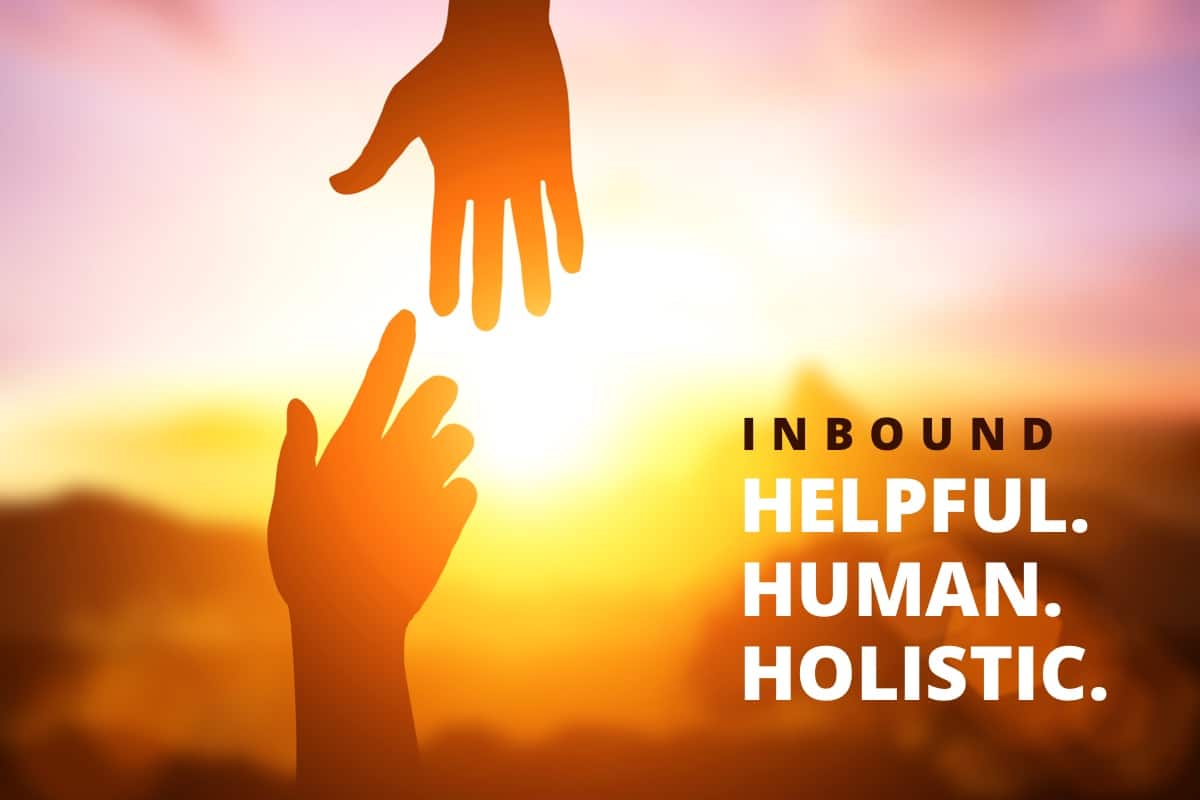
When was the last time something came into your world and basically rewrote the rules around what you thought you knew or believed?
We refer to these things sometimes as old wives’ tales. Some recent examples that I can recall are that dogs see in black and white, and that cold air will give you a cold (both false, by the way).
I’ve been involved with marketing (if you include college) for 30+ years now and, looking back, I feel a little bit like I’ve believed old wives’ tales the entire time. This might be a little dramatic because the times do change, as they say, but I still feel like I’m now able to see in color.
Marketing has always been about casting a wide net.
For me, it was about finding ways to let everyone know that your product or service existed. So when they had a need, you would be top of mind.
As John Wannamaker famously said, “Half of my advertising is wasted, I just don’t know which half.” It’s never been a fair or ideal game.
My earliest days as a professional involved designing newspaper and magazine ads, billboards and direct mail. Even when I began to move into the world of the internet, I spent my days designing banner ads, sponsorships and websites with the hope that someone would stumble over them and discover that they couldn’t live without whatever was being sold (ha, good luck!).
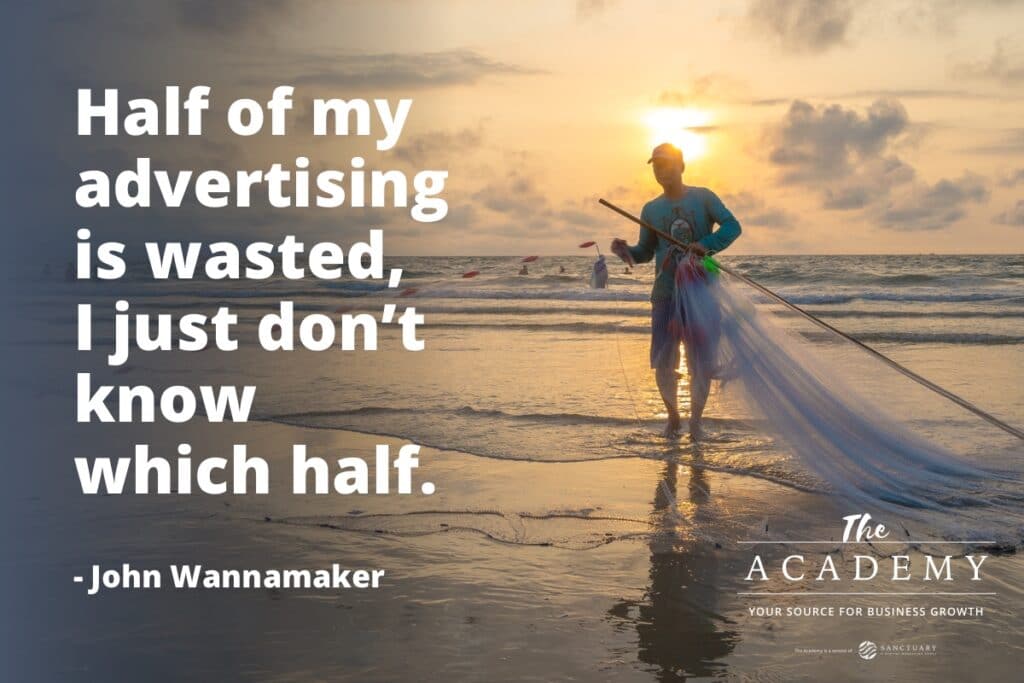
But now we can hyper-target the right audience.
These days, digital marketing is a little different because we’re able to target ideal customers and position our ads in front of people who are actively interested in what we do or sell. But, many people are still just trying to cast a wide net and bring in as many fish as possible. Most of the expense and effort is still wasted on people that don’t care, and will never care, because they just don’t have a need for what you’re offering.
On top of these wide-net tactics being inefficient and difficult to track your ROI, there are some real problems that can cause damage to the perception of your company.
Not many people have been annoyed by a newspaper ad, but have you ever been annoyed by a TV commercial? How about an online ad that keeps popping up in your face or one that follows you around the internet? How often do you get spammy emails, sometimes over and over from the same person, and the sole purpose is to get you to buy… RIGHT. NOW. How about cold callers? Don’t even get me started!
These ads and people are selling, selling, selling and not only are you not ready to buy, you’re now irritated and that will likely affect your buying decisions down the line. The guy yelling at me on TV or spamming my email is not going to be my first choice if I’m ever in the market, I can guarantee you.
Many of the tactics mentioned previously have now been labeled outbound marketing. Basically, it means that someone is pushing their message out to the widest audience possible to find the needle in a haystack. Sometimes it works. Most of the time it doesn’t.
People are sick of being interrupted when they don’t want it.
It has been said that people are inundated about 2,000 times a day on average with outbound marketing interruptions. People these days are pretty much sick and tired of being marketed to and they are not only ignoring more and more outbound tactics, but actively looking for ways to aggressively block these tactics. Everything from basic ad blockers, to laws that protect our privacy.
Being an outbound marketer can occasionally return results by brute force and you will eventually find a needle in the haystack. But it’s becoming increasingly difficult, discouraging and costly.
Even targeted outbound tactics such as trade shows and seminars aren’t ideal anymore because it’s now so easy, convenient and cheap to research and learn online about almost anything.
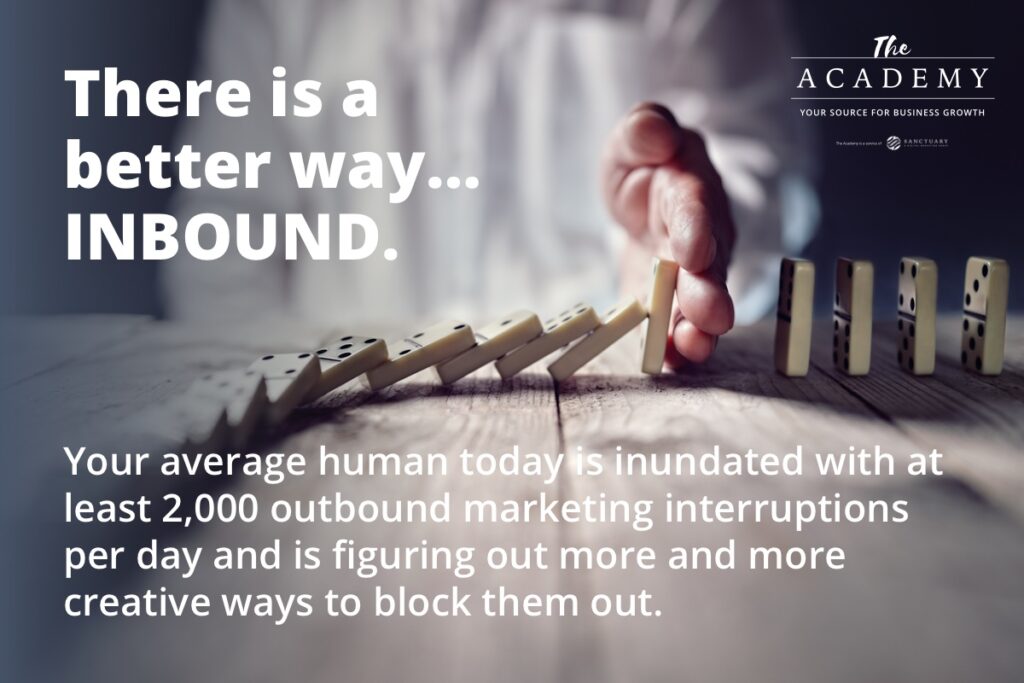
There’s a better way: inbound marketing
Inbound marketing is all about positioning yourself where people are actively looking for what you do or sell, and doing it in such a way that you can help them as a real human being. You are not directly selling them anything. Instead, you are trying to solve problems for people by providing information, advice, deep knowledge and education about something they’re actively interested in learning about.
Inbound marketing at its core is about building relationships. You’re trying to do everything you can to build trust and not directly market or sell, and especially not annoy the person you’re talking to. These days, our job as marketers is to listen instead of yelling to get the attention of our prospective customers. We want to hear about their unique problems and needs and then slowly build trust so we can help them find solutions in our products and services.
The mindset of an inbound marketer is drastically different from traditional outbound marketing. It can take a moment to switch gears from the way you’ve always thought about marketing. But once you do, you’ll find that even traditionally outbound marketing tactics can be done in an inbound way, which is mind blowing. There’s still room for ads, emails and phone calls in the world of inbound marketing. You just need to do it in a way that’s helpful and human.
Transform your marketing mindset.
The best metaphor I’ve heard to this point around the difference between inbound and outbound marketing is a blind date.
You’re obviously on a date because you’re interested in meeting someone special. You have a problem to be solved: you need a partner and you have an active interest in dating.
But would you ever accept a proposal for marriage on the first date? Absolutely not. It seems crazy, but this is the mindset of traditional outbound marketing. You’re essentially proposing marriage to someone that has zero trust in you or knowledge about you. To commit to marriage, both parties need to understand each other’s backgrounds, likes and dislikes, and ultimately decide if your needs can be met in the relationship.
Selling is like dating. It takes time. It takes patience. There is a process to building a good relationship that has a foundation of trust and your marketing and sales processes need to be working within the same boundaries. Your customers need to decide if you’re someone that meets their needs and that you can provide what they need.
Let’s all agree that we’re no longer going to propose marriage on the first date.
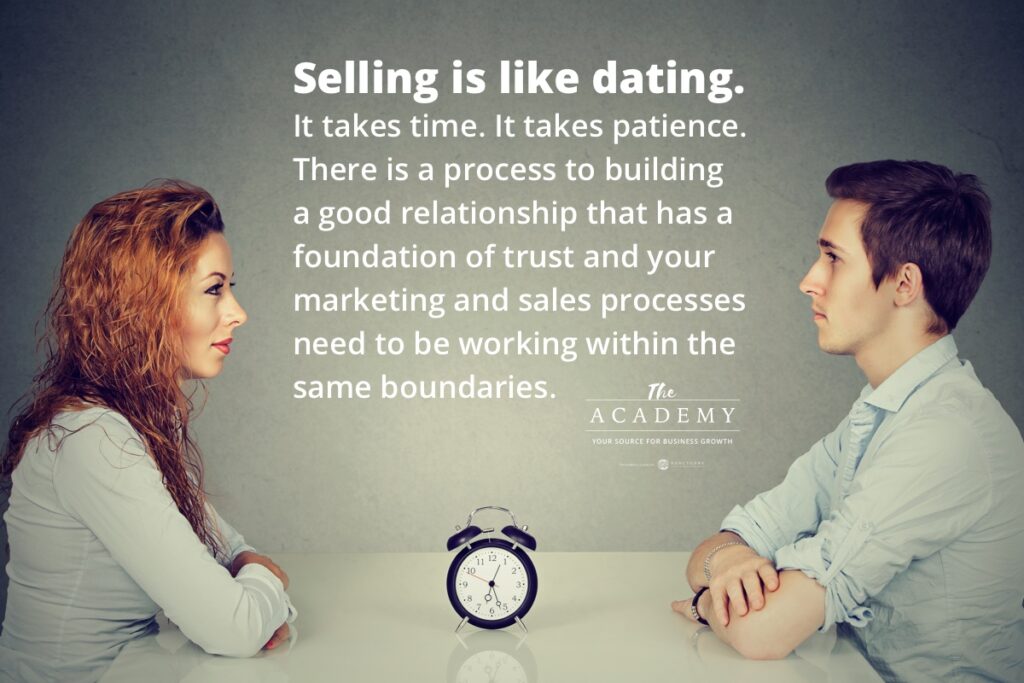
A quick summary of the inbound approach
The core of inbound marketing is all about creating valuable, educational content of all kinds. For most companies, this is the point where a decision has to be made about where they’re going to focus their efforts and finite resources.
Many companies simply continue to stick with the traditional methods for several reasons.
First, it’s what they know. The honest truth is that you will occasionally find a needle in the haystack and this does bring in revenue that keeps a business afloat.
Second, creating content is difficult. It takes a lot of time. It requires a level of expertise and knowledge. The investment of resources can be high. It requires research, strategy and a high level of technical execution on several levels that most companies are ill-equipped to deal with.
This is where you have an advantage.
I’m obviously not going to be able to tell you everything about how to do inbound marketing during this introduction, but I’m going to try to get you started on the right path.
First…
The first thing you should do is understand who your ideal customer is and what problem you need to solve for them. Inbound is about meeting your customers where they are in what we call The Buyer’s Journey.
If you stop and think for a minute, your ideal customer has a specific need, at a certain time. Budget, location, goals… Every ideal customer is different and you need to understand yours.
Second…
The next step is to intimately understand the problem they have and where they are in the buyer’s journey. All problems are unique and people may be at the awareness, consideration or decision phase.
The janitor might need a product that makes the floor shine so they can impress the CEO and get a promotion. They need this in the next week or sooner and they know exactly what they want and they’re at the decision phase.
The CEO might be looking to cut expenses in the following year. They’re at the awareness phase because they don’t even know that they need to buy a floor shining robot so he can hire fewer janitors and reduce overhead.
Once you understand your ideal customer, start creating content that educates and solves their unique problem and that starts the relationship. Remember, you are never selling.
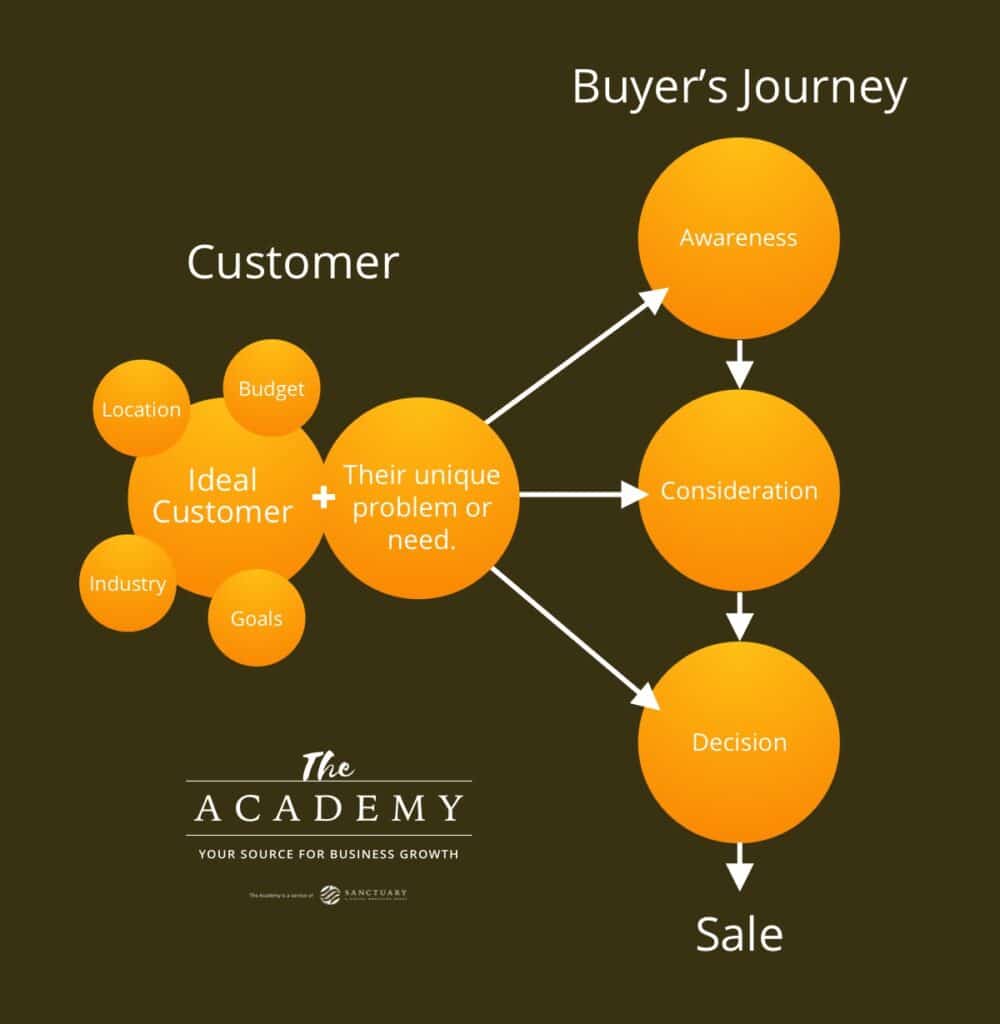
Create content tailored to your audience.
How you create content to educate your ideal client is completely up to you and dependent on what you do and sell. One of the most tried and true methods is blogging and creating articles around a topic. Customers go to the internet first these days and search and your content can show up for what you do and sell.
If you’re unable to write, create videos. It doesn’t have to be a major production as the countless YouTube channels, online on every niche topic attest. Everyone has a smart phone these days (can you still call it that, ugh!) and the video quality is generally top notch. Record a video and put it up on YouTube. Anyone can do this.
The most basic example is just making sure that your website does it’s job. Continually creating new content is extremely important. But if your website has two generic paragraphs of text on each page, that’s not educating or convincing anyone.
Think back to the metaphor of dating. Would someone want a second date if all you did was respond to their questions with one sentence answers? People need a lot of information to trust someone and it’s your job to give them what they need, starting with basic content that explains what you do and what you have to offer.
Take a full-circle approach—turning your flywheel.
There’s a lot more to discuss around the inbound methodology. But one of the biggest takeaways is that inbound isn’t just about marketing (I know… Mind. Blown.).
Many people are introduced to inbound by way of inbound marketing. But what they don’t know is that inbound is a methodology for running your business from beginning to end.
The inbound methodology applies to not only your marketing processes, but your sales processes and even your operations.
Here’s the gold in all this… When you apply the inbound methodology to your entire business, your efforts begin to add momentum, value and revenue that’s created with fewer resources and less effort. Essentially you’ll be able to attract, engage and ultimately retain more customers with less effort and fewer dollars spent.
This is referred to as the flywheel effect, and the concept is simple. Turning a flywheel takes a lot of effort initially. But once you get it moving, and you continually add force and reduce friction, the flywheel will begin to turn on it’s own with zero effort.
This is the simple beauty that’s hidden within the Inbound methodology. If you can switch your thinking from outbound marketing to inbound, and integrate this same belief system of being helpful and human across everything you do for potential and existing customers, your business will grow. Why? Because you’re reducing friction on your flywheel across all aspects of your company. This results in your flywheel spinning faster and faster, and it all starts with you identifying your ideal customer and helping them in an honest and human way instead of selling to them.
It’s a simple idea, but you have to commit. You have to even be willing to point a potential or existing customer to an alternate solution or competitor if it’s really the best solution to their problem. You must always be helpful, even if you lose out in the end. But I’m pretty sure you’ll find that if you embrace this idea completely and consistently, the business that you actually lose will be far less than the goodwill and growth that you’ll gain.
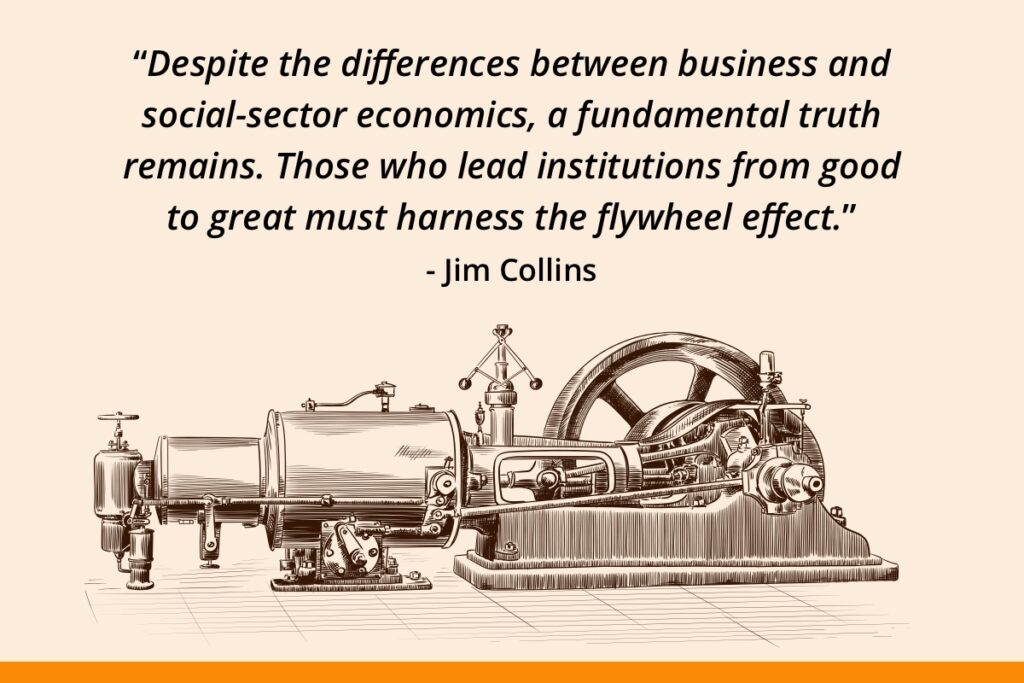
Embrace the inbound methodology.
Embracing inbound as a methodology, a belief system, almost a bible around how you do business, and it’s a big idea. It has changed the way I do business as a marketer, as a sales person, as a business owner and as a person.
Honestly, it makes me feel a little bit better about myself as a person. I’m no longer just trying to sell and to generate revenue. I’m honestly being helpful and sending good karma out into the world. And if you believe in karma, you know what that will get you.
Most Popular Articles

Seeing Favicons in Your Google Search Results? Here’s Why…
Have you noticed anything different in your Google Search results lately? Google added tiny favicon icons to its organic search results in January. It was…

Business Growth and Digital Marketing News & Tips 11-17-24
Are you encouraging and rewarding innovation? Lee Cockerell is the former Executive Vice President of Operations at Walt Disney World. A lover of traditional red…

Business Growth and Digital Marketing News & Tips 11-27-24
A culture of gratitude "Feeling gratitude and not expressing it is like wrapping a present and not giving it." – William Arthur Ward Beyond being…

